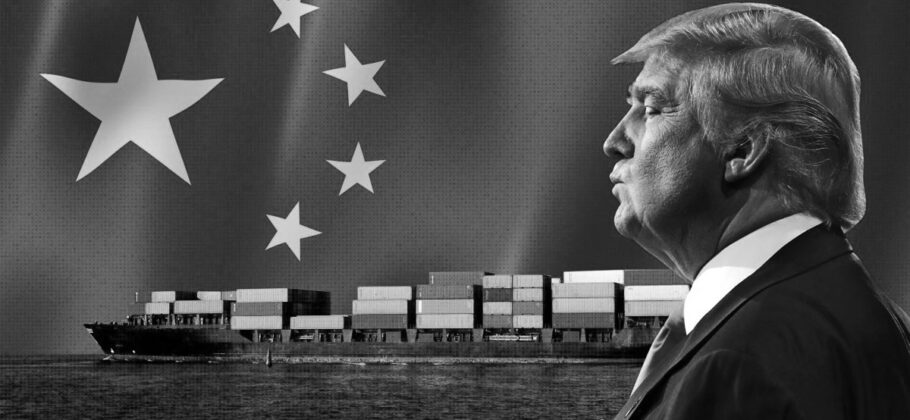As the end of October approaches, the world’s focus is turning toward one of the most consequential meetings of the year: President Donald Trump’s planned face-to-face with Chinese leader Xi Jinping. The encounter comes after weeks of escalating rhetoric, fresh trade restrictions, and growing unease in financial markets. Both men are entering the summit determined to project strength, and both know that their words now move the world’s economy.
Trump has framed the showdown as part of a broader campaign to reclaim American dominance in global trade. “They have some cards. We have incredible cards,” he told reporters during a recent meeting with South Korean President Lee Jae Myung. “If I played those cards, that would destroy China. I’m not going to play those cards.” The remark—part boast, part warning—captured the essence of Trump’s strategy: pressure Beijing relentlessly, but keep the ultimate weapon in reserve.
At the same time, Xi has been signaling that China will not be intimidated. Having consolidated power at home and tightened his grip on the economy, he appears ready to counter Trump’s tariffs and restrictions with new trade measures of his own. Beijing’s expanding export controls on rare-earth minerals, which are essential for modern electronics and military systems, have already jolted Western governments. One Chinese commentator described the move as “a necessary defense against economic aggression,” framing it as a direct response to Washington’s sanctions and technology bans.
The Escalation That Set the Stage
Tensions reached a new peak this month when Trump announced an additional 100 percent tariff on Chinese goods and new software export restrictions aimed at limiting Beijing’s access to key technologies. “Now they’ve forced me to charge them what is the equivalent of 155 to 157 percent,” Trump said in an interview with Fox News, defending the move as long overdue. “China has built their military because of us. China has taken out trillions and trillions of dollars.”
The decision triggered an immediate reaction in markets, with stocks plunging on fears of a renewed trade war before rebounding after Trump reassured investors that “everything will be fine.” Treasury Secretary Scott Bessent has been dispatched to manage the fallout and prepare the ground for upcoming talks with Chinese Vice Premier He Lifeng. The two sides are expected to meet ahead of the Trump–Xi summit, scheduled to take place on the sidelines of an economic forum in South Korea.
Despite his hard line, Trump has also sought to balance toughness with personal diplomacy. “I get along great with him,” Trump said of Xi. “He’s a very strong leader, a very amazing man, and his life is an amazing story. I think we’re going to be fine with China, but we have to have a fair deal.” His alternating tone of confrontation and flattery has become a familiar feature of his China strategy, keeping markets and foreign capitals guessing about whether the United States is heading toward conciliation or conflict.
China’s Counterstrategy
From Beijing’s perspective, the conflict is about more than tariffs. Xi’s government has moved to strengthen its control over industries vital to global supply chains. The latest round of export restrictions covers high-strength magnets, essential to electric vehicles, smartphones, and military aircraft. Western officials warn that the move could jeopardize production of cruise missiles, drones, and nuclear submarine components.
Analysts in Beijing say the new policies are deliberate signals that China can hurt the United States in ways tariffs alone cannot. “The West depends on us for these resources,” said one policy adviser quoted in Chinese state media. “We are no longer just suppliers. We are strategic players.” That message, combined with China’s outreach to developing countries through the BRICS alliance and its Global Development Initiative, underscores Xi’s intent to build an alternative world order less dependent on the United States.
The U.S. Argument: Economic Fairness and Security
Washington, for its part, insists that the measures are a necessary defense against unfair trade practices and intellectual property theft. Trump has long accused China of “ripping off our country for years,” pointing to massive trade imbalances and industrial espionage. Supporters argue that his tariff campaign, while painful in the short term, has forced companies to reconsider overreliance on Chinese manufacturing.
“China has taken advantage of the system for too long,” said Treasury Secretary Bessent earlier this week. “What we are doing is about leveling the playing field, not escalation for its own sake.” Still, even within the administration, there is awareness that the tariffs have real costs. U.S. farmers, who once exported vast quantities of soybeans to China, have lost major market share to Brazil. Meanwhile, consumers face rising prices as the holiday season approaches, since most toys and up to 90 percent of Christmas goods still come from China.
Beijing’s Expanding Leverage
Xi’s government appears confident that time is on its side. China’s manufacturing output remains strong, and its military modernization continues at a rapid pace. According to the Center for Strategic and International Studies, China is now “scaling up its munitions manufacturing capacity and acquiring advanced weapons platforms at a rate five to six times faster than that of the United States.”
China’s foreign policy also reflects growing assertiveness. Recent summits hosted by Beijing featured leaders from Russia, North Korea, Iran, and India, highlighting the emergence of what Chinese media calls a “new era of multipolar cooperation.” By contrast, U.S. alliances have come under strain, with some European partners wary of being drawn into another cycle of economic conflict.
Flashpoints Ahead
Several major disputes now define the Trump–Xi relationship:
- Rare Earth Embargo – China’s near monopoly on rare earths gives it leverage over critical industries, from defense to clean energy.
- Tariff Escalation – Trump’s tariffs have triggered Chinese retaliation, with both sides facing higher costs and volatile markets.
- Technology Restrictions – U.S. limits on software and AI exports could cripple Chinese firms, while Beijing tightens its own data rules.
- Energy Sanctions – Washington continues to pressure China over oil imports from Russia and Iran, accusing it of funding “destabilizing regimes.”
- Currency and Financial Power – The U.S. still dominates global finance, but China is building new systems to reduce dependence on the dollar.
- Military Expansion – Both powers are modernizing rapidly, raising concerns about future confrontations in the Pacific and South China Sea.
The Stakes and Possible Outcomes
The upcoming meeting between Trump and Xi could determine the course of global trade for years. If negotiations succeed, a temporary truce may calm markets and offer relief to industries on both sides. But if talks collapse, the result could be a deeper and more dangerous economic conflict, with potential to spill into technological and military realms.
For Trump, the challenge is balancing his America First rhetoric with the need to stabilize markets ahead of the 2026 election cycle. For Xi, the goal is to show China cannot be bullied while maintaining economic growth at home. As one Chinese commentator put it, “Xi plays the long game. Trump plays the loud game. But both understand that this is not just about trade—it’s about who leads the world.”
Whatever the outcome, the meeting promises to be one of the defining moments of the decade. Trump’s warning that he could “destroy China” may have been bluster, but it reflects a deeper truth: both men know that their next moves will shape not just their nations’ futures, but the balance of power across the entire world.





